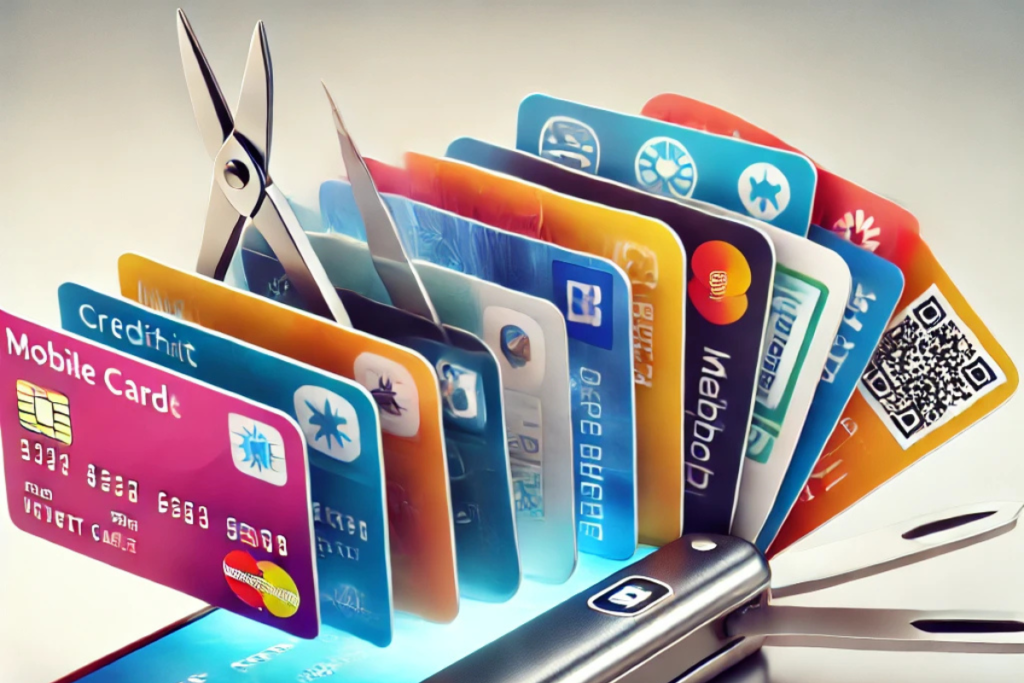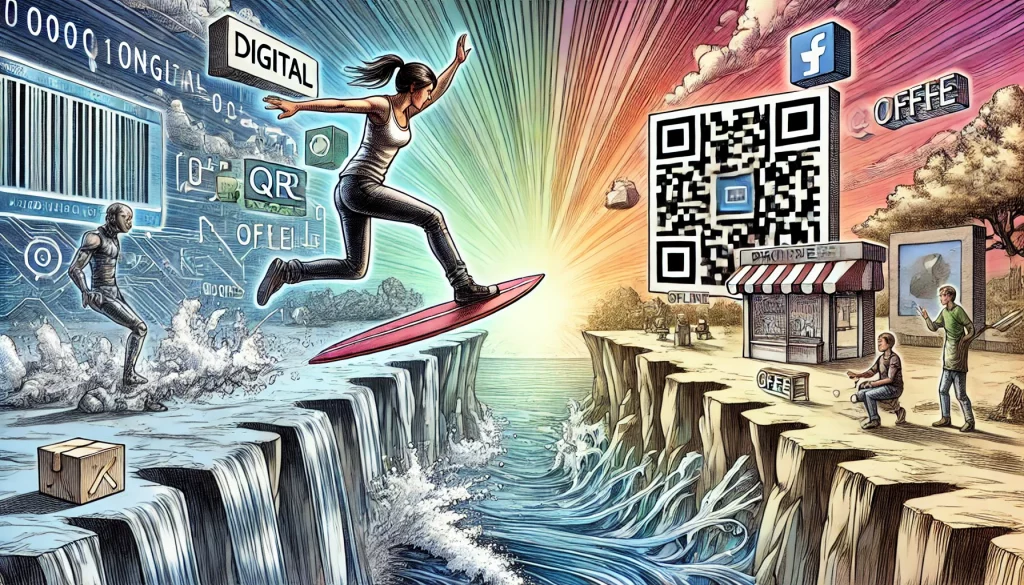
Basic concepts Personalization of...
As customers become more and more inundated with content, it becomes increasingly important to keep up with the...
In an increasingly digital world, the ability of brands to seamlessly integrate into the daily lives of their consumers has become essential. Mobile wallet cards have become a key tool in the development of the mobile wallet market. for this connection, enhancing the user experience through an omnichannel approach that facilitates their passage between the online and offline worlds. These cards, which range from tickets to loyalty cards and digital coupons, offer users convenience, personalization and security while generating added value for brands.

We will explore how mobile wallet cards enrich the user experience in an omnichannel environment and analyze the top five benefits for consumers, as well as the five key advantages for brands. By the end, you will understand why mobile wallets are revolutionizing omnichannel experiences and empowering relationships between brands and their users.
Mobile wallet cards are digital cards that users can store in native mobile wallet applications such as Apple Wallet or Google Wallet. These cards can represent tickets, coupons, loyalty cards, boarding passes, access credentials and even payment cards. Once stored in the user's mobile device, mobile wallet cards are accessible anytime, anywhere, enabling an agile and frictionless user experience.
In an omnichannel ecosystem, these digital cards play a key role in facilitating a direct connection between the user and the brand at every touchpoint, whether in a physical store, a website or a mobile app. Thanks to their versatility and advanced features, such as push notifications and automatic updates, mobile wallet cards have become a critical bridge between online and offline channels, providing a truly integrated experience.
The omnichannel experience refers to a brand's ability to deliver a consistent and unified user experience across all interaction channels, both digital and physical. In this context, mobile wallet cards play a key role, allowing users to carry all the information they need to interact with the brand immediately and effectively at any touchpoint. Whether the user is browsing online or making a purchase in a physical store, these digital cards provide a continuous and seamless user experience through their QR Codes and barcodes.
For example, imagine that a customer receives a notification of a special offer in his mobile wallet while passing near a store. The ability to have that digital card automatically updated with new offers, loyalty points or reminders personalizes the customer experience and makes it easier to connect with the brand at the right time.. In this way, mobile wallet cards not only facilitate the transition between online and offline channels, but also help to strengthen the bond between the consumer and the brand.
Mobile wallet cards offer significant advantages over mobile apps in terms of adoption. Because they are integrated directly into native mobile wallets, such as Apple Wallet or Google Wallet, they do not require the user to download or manage additional apps, removing a major barrier in the adoption process. This facilitates access and reduces friction in the initial interaction, making users more willing to adopt and keep mobile wallet cards on their devices. In addition, mobile wallet cards update automatically and can send personalized location-based notifications without the need for a brand-specific app, which is more convenient for the user and effective for the brand in communication and engagement strategies.
Geolocation enables brands to offer contextual, real-time interactions based on the user's location. In an omnichannel environment, this functionality facilitates an integrated experience that connects the online and offline worlds. Imagine a customer has a discount coupon from a clothing store stored in their mobile wallet. With geolocation, the brand can send a reminder to the customer about the coupon just when the customer is near one of its stores, incentivizing a physical visit.
In addition to facilitating targeted promotions and discounts, geolocation makes it possible to offer relevant information in the right context. This functionality creates a user experience that is intuitive, personalized and continuous, turning every interaction with the brand into an opportunity to strengthen the relationship between the consumer and the company.
Contextual proximity and personalization with geolocation
Mobile wallet cards allow users to receive real-time notifications and updates based on your location and behavior. For example, a customer can receive a reminder about a special offer when they are near a physical store or receive a real-time update on their loyalty points card. This customization capacity and proximity improves the relevance of interactions and adds value to the user experience.
Omnipresence and accessibility
Once downloaded to the mobile wallet, the card is available anytime, anywhere, making it easy for the user to access their benefits or information without the need for a constant internet connection. This not only enhances convenience, but also ensures that the user always has access to relevant information to interact with the brand, whether in a physical store or online.
Ease of use and intuitive experience
Mobile wallet cards are designed to be intuitive and easy to use. Because they are integrated into mobile wallet applications such as Apple Wallet or Google Wallet, they do not require complicated configurations or the use of additional applications. This allows the user to manage multiple digital cards in one place, improving accessibility and reducing the time needed to access discounts, loyalty cards and other benefits.
Privacy with control over notifications and location
Mobile wallet apps allow users to have control over what information they share and can decide if they want to receive notifications or updates from a specific card, deciding when to receive geolocated notifications and from which brands.
This combination of privacy, control and geolocation enhances the user experience by allowing them to choose their level of exposure and receive only the notifications they are interested in at key times.
Sustainability
Mobile wallet cards eliminate the need for physical cards and printed paper, helping to reduce environmental impact. For users who value sustainability, this is a significant advantage that aligns their personal preferences with their consumption practices.

QR codes on mobile wallet cards are the natural bridge between the online and offline worlds.
Improved customer loyalty
Mobile wallet cards allow brands to implement loyalty programs more effectively. Through push notifications, brands can remind customers to accumulate points, receive exclusive discounts or participate in special promotions. This continuous interaction increases retention and fosters customer loyalty, as the user perceives constant value by keeping the card on their mobile device.
Increased user engagement
By using mobile wallet cards, brands can maintain direct and continuous contact with users, sending personalized and relevant messages based on the customer's behavior and location. Not only does this drive engagement, but it also improves brand awareness as an entity that is close and present at key moments in the consumer experience.
Real-time data collection
Mobile wallet cards provide brands with valuable data about their customers' behavior, such as the times they interact with the card, the stores they frequent and the promotions they use. Ehis data allows brands to trace the customer journey in an uninterrupted way, generating a valuable asset to analyze and detect points of friction and opportunities for improvement. in your marketing strategies and further personalize offers, optimizing campaign performance and improving the user experience.
Increased conversion and value added
Push notifications and real-time updates allow brands to capture customer attention at the right time, increasing the likelihood of conversion. For example, by sending a discount notification to a customer who is near a store, brands can motivate a visit and potential purchase. This ability to add value at the right time increases conversion opportunities and strengthens the brand's relationship with the user.
To illustrate how mobile wallet cards can be integrated into an effective omnichannel strategy, let's review some examples of brands that have leveraged this technology to enhance the user experience and maximize profits:
StarbucksWith its digital loyalty card, Starbucks allows users to accumulate points and receive notifications about special offers, all integrated into its mobile wallet app. This allows users to access their benefits at any of the chain's stores and encourages loyalty.
NikeThe brand has integrated coupons and event cards into mobile wallet cards, allowing users to receive updates on events and discounts based on their location, improving their engagement and facilitating the shopping experience.
AirlinesSeveral airlines have implemented digital boarding passes that update automatically in case of flight changes, providing convenience and improving the user experience by reducing the use of paper and simplifying the boarding process.
McDonald'sThrough its app and geolocated discount cards, the fast-food chain sends special offers to customers when they are near a location, thus encouraging visits and increasing customer loyalty.
Sephora: The cosmetics brand uses geolocated mobile wallet cards to notify customers about discounts and exclusive events when they are near a store, creating an engaging and personalized experience.
MarriottMarriott International uses mobile wallet cards to store room reservations, access passes and loyalty membership cards, allowing guests to check in and access their rooms contactless via their mobile devices. In addition, the chain sends personalized notifications based on the guest's location, such as recommendations for local activities or reminders of exclusive benefits at the hotel's restaurants and spas.
Louvre MuseumMobile wallet cards: It has integrated mobile wallet cards to enhance the visitor experience. Through these cards, visitors can store their admission tickets and receive real-time updates on opening hours, special exhibitions and promotions in the gift store or museum cafés. In addition, the museum uses geolocated notifications to guide visitors to the most popular exhibits and reduce congestion in certain areas, improving the flow of people and enriching the experience.

Basic concepts Personalization of...
As customers become more and more inundated with content, it becomes increasingly important to keep up with the...

The first step to achieve a...
Discover how to implement an effective omnichannel personalization strategy with Nicolás Casariego, Head of...

Creativity, AI & Marketing:...
Creativity, AI & Markerting will be the trends that will be setting the course for 2025, only those companies...